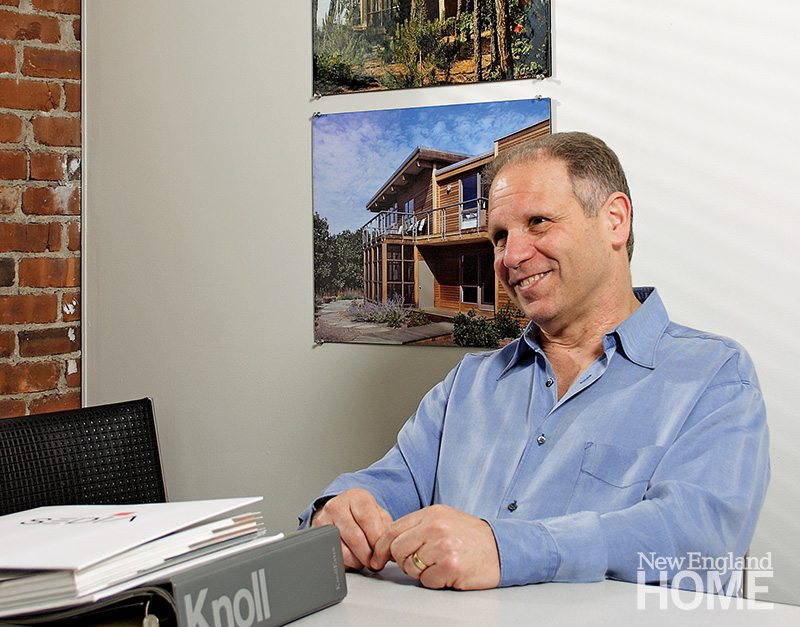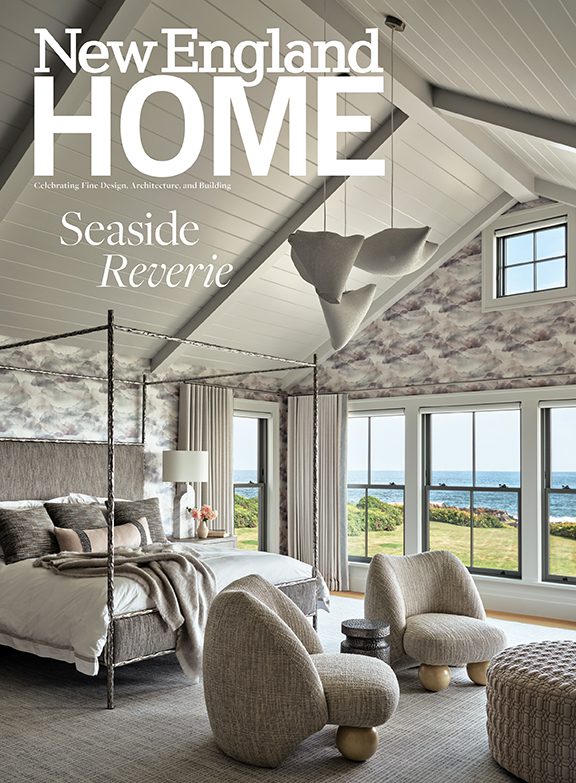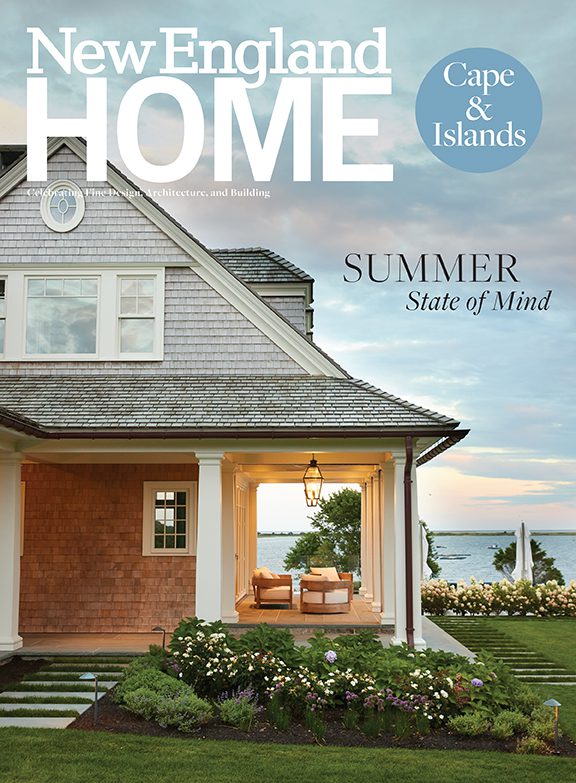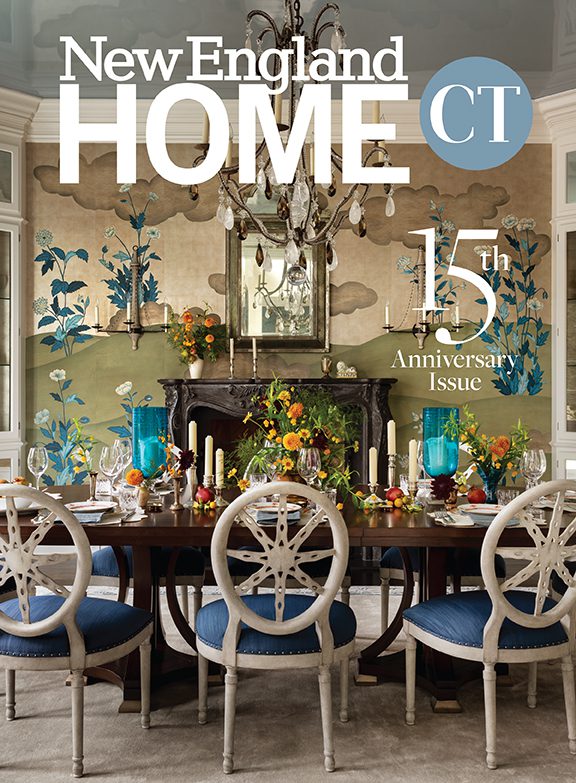Interview: Mark Hammer
August 28, 2014
A Cape Cod architect talks with New England Home’s Kyle Hoepner about the importance of saving the Cape’s surprising number of modernist homes.
Text by Kyle Hoepner Photography by David Carmack
Everyone connects Cape Cod with classic Colonial or “saltbox” houses: square, shingled, chimneyed, ubiquitous. Few are aware, however, that in the middle of the twentieth century a coterie of architects and their friends—including some very famous names—turned part of the outer Cape into a hotbed of modernist home-design experimentation.
KH: Why don’t we start, Mark, with a very brief outline of how these modern houses started to appear, and how they differ from what had been on the Cape before?
MH: What had been on the Cape before—especially the outer part, which is different from the near Cape—was mostly fishing and farming. There were some salt works, boat building…
KH: And, I think, sheep herding. Apparently there was a big vogue for Merino wool that ended up denuding huge tracts of land.
MH: Well, all of those things contributed to deforestation. And people tended to concentrate on building houses that got them through the winter. It was about how to survive a really nasty, windy, cold winter. People built houses down in the hollows. If you look at maps of the Cape, there are these little rivulets that run through the landscape. That’s where all the Cape houses were. And the Cape houses were really based on the English cottage, but made more rugged. If you look at them, they’re almost cubical. The hearth is in the middle, the fireplace, the stove…
KH: Everything huddles around that.
MH: Everything does. Little tiny windows, and the houses all have shingles, almost like fish scales. They’re there to repel the weather. So you’ve got an architecture that was perfectly suited, from an architect’s standpoint—it’s a very honest, very clear response to the problem. But they didn’t make very good vacation houses.
KH: How do vacation houses come into the picture?
MH: This part of the Cape started developing. Especially right after World War II, people started coming here to vacation. There was a lot of land available, partially because there was a lot of unused land, but also because of Jack Phillips. Jack was part of the Phillips family, as in Phillips Andover. And Jack was kind of a…I wouldn’t call him a “black sheep,” but he was kind of the “artiste” in the family. He controlled a huge swath of land down on the ocean side and was very well connected with people at Harvard and MIT, and a lot of artists, writers and architects. He started inviting people like Serge Chermayeff and Marcel Breuer, and then selling them pieces of property at very low cost.
So these people and their friends discovered this area. It was way off the main track, with beautiful little kettle ponds that provided fresh water but were only a short walk from the ocean. And they started building a new kind of house that was really a summer house, very light and inexpensive, that respected the environment, sat gently on it. A lot of these houses were up on pilotis—little posts—and they were all about a new kind of living on the Cape. They were about indoor/outdoor living. Where the fireplace used to be the center of the house, the fireplace now moved to the outside wall, where it’s not doing much good in terms of actual warmth.
KH: Many of the houses also have big terraces or decks, don’t they, and they were built up high looking out over the dunes or a pond?
MH: The whole paradigm for a house shifted, and it was really based on European ideas and experiments at the Bauhaus, where people were doing what Corbusier called the plan libre, where the wall becomes separate from the structure of the house. That gives you a new kind of freedom to open the house out, use a lot more glass and other new materials. In fact, the wall sort of—literally and figuratively—disappears, and you now have outdoor living rooms as well as indoor living spaces. Breuer always cantilevered out a screened porch. There were similar elements throughout the four houses that he did, which literally thrust you out into the landscape.
KH: So how did you personally find out about these houses and become involved in the work you’re doing now, renovating and expanding some of them?
MH: One day I was riding my mountain bike back through the woods and saw a sign that said “Breuer.” A little later there was another one that said “Chermayeff,” and then “Saarinen.” So I did some investigating. It’s like peeling away layers: the more things you find out, the more there is. The more connections there are, the more interrelations. I think an entire book could be written just about the sociology of this thing—not just the architecture, but the relationships between the different people, and what they were all doing. There were really amazing people back there, doing some extraordinary work at the time.
KH: But it seems many of these buildings are not in very good shape anymore. And new owners are coming in who want more house than is currently on the lot. Which brings us to Peter McMahon and the Cape Cod Modern House Trust.
MH: The work my own architectural firm does is for people who have either retained or have bought houses that are still private property. But there are at least half a dozen really excellent examples of houses that were either taken by the Cape Cod National Seashore after it was created in 1959, or, because of some lease arrangement, became owned by the park once the last member of the family died.
One example is the Hatch House, a really fabulous house that was designed by the artist and writer Jack Hall. Ruth Hatch just died in the last year, and now that the park has ownership there’s a question of what’s going to happen to the house. A lot of these houses were originally slated for demolition, so a lot of people, including myself, started raising concerns about what was going to happen. Gina Coyle founded the Wellfleet Modern Architecture Trust; Mildred Schmertz wrote an article in Architectural Record.
And Peter McMahon started an organization called the Cape Cod Modern House Trust that’s trying to raise money to preserve the houses that are owned by the national park. Initially he’s gotten a $100,000 community preservation grant from the town of Wellfleet for the Kugel/Gips House, which was designed by Charles Zehnder. And he’s got a twenty-year lease from the park to restore the house and make it a retreat and learning center. But some of the houses are falling into terrible disrepair. There are trees coming up through the roofs. So Peter’s doing very good work to try to ensure the future of these houses.
KH: I know this gets into more politically sensitive ground, but is there any idea of working with the owners of houses like these that are still in private hands, and trying to get some restrictions on deeds that will help preserve them?
MH: Wellfleet’s historical commission may recognize some of these houses. Some of them may get historic designation.
KH: Where can people go to find out more? Or to get involved, if they’re interested?
MH: The Cape Cod Modern House Trust just put up a Web site. There’s a lot of good information, and they’re certainly accepting donations. And there’s actually the opportunity to work on some of these houses, for people who have the skills. One final thing: I’m on the board of the Truro Center for the Arts at Castle Hill, and when we accumulate five houses to show, we do a modern house tour in the summer.
KH: So there will be one this year?
MH: There will be one this year on August 24. We’re doing it in association with the Trust, so it’s fundraising for both organizations. It’s a great way for people who are interested to actually experience these houses, some of which are remote and in private hands.
Editor’s note: The Cape Cod Modern House Trust Web site can be found at ccmht.org.
Share
![NEH-Logo_Black[1] NEH-Logo_Black[1]](https://b2915716.smushcdn.com/2915716/wp-content/uploads/2022/08/NEH-Logo_Black1-300x162.jpg?lossy=1&strip=1&webp=1)








You must be logged in to post a comment.